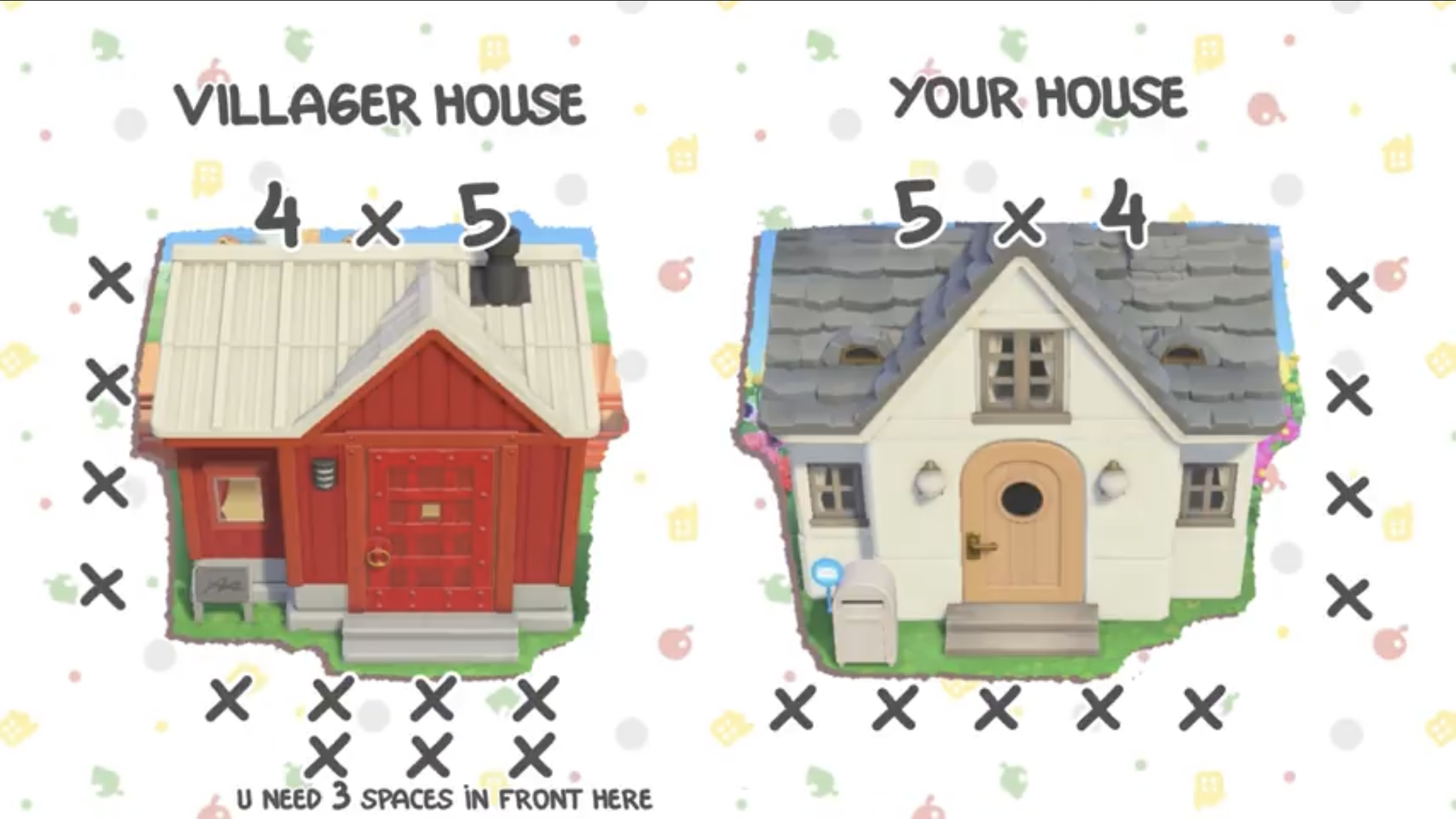Animal Crossing has become emblematic of life simulation games, captivating players with its charming aesthetics and intricate social dynamics. Within its digital ecosystem lies a multitude of gameplay mechanics, one of which is the ability to relocate villagers’ houses. This feature may appear innocuous within the broader context of the game; however, it invites an analysis rooted in cultural relativism, illuminating the nuanced interplay between player agency, community dynamics, and environmental aesthetics.
Upon the initiation of moving a villager’s house, players engage in a quintessential aspect of gameplay: exerting control over their virtual environment. This process begins in earnest with the player using the in-game “Tom Nook” services to request the relocation of a chosen villager’s abode. The transaction is emblematic of broader cultural practices concerning property and spatial organization. Within the game, spatiality is of paramount importance, as villagers’ houses are not merely structures, but rather nodes of interaction that encapsulate the essence of community relationships.
This mechanistic relocation mirrors practices within many cultures where the reconfiguration of living spaces is tightly interwoven with social and economic factors. For instance, in certain collectivist societies, the spatial arrangements of homes within a community may reflect familial hierarchies or social stratification. Moving a villager’s house in Animal Crossing thus acts as a microcosm of these broader sociocultural rituals, presenting an opportunity for players to engage in a form of social engineering. Here, one may observe a resistance to the static nature of community establishments; instead, the act of moving symbolizes adaptability and continuity.
When exploring the types of content players can anticipate while dealing with villager relocation, one must consider the implications of individual player choices. Players often seek to curate aesthetically pleasing landscapes, interlacing the architectural styles of their villager’s houses with their environmental preferences. Thus, the relocation process could be likened to the artistic endeavor of landscaping, where the ecological and sociocultural dimensions coexist harmoniously. In a sense, players assume the role of contemporary urban planners, tasked with balancing aesthetic appeal against the functional needs of their villagers.
One must also contemplate the intrinsic characteristics of community bonding and interpersonal relationships depicted in Animal Crossing. The relationships players forge with their villagers are often perceived as genuine emotional investments. The decision to move a house can evoke psychological ramifications; it may be seen as a form of benevolence toward the villagers, enhancing their living conditions and integrating them into a newly envisioned community. Conversely, relocating a villager from their established location may generate feelings of disconnection or loss for both the player and the virtual inhabitant, echoing themes of diaspora and displacement found throughout various global histories.
Moreover, players might encounter dynamic reactions from villagers post-relocation, which serves to intensify the social complexity inherent in the game. Each villager has a unique personality and set of preferences that can dictate how they respond to their new environment; a grumpy villager might express displeasure at the move, while a peppy character may embrace the transition enthusiastically. This dichotomy reflects the diverse reactions individuals within any given culture might exhibit when confronted with change, underscoring the importance of individual agency within collectively shared spaces.
In light of these sociocultural interactions, it is pivotal to examine the critical aspect of community enhancement through villager relocation. The displacement of homes is not simply a matter of preference; it can be a catalyst for fostering new relationships and interactions. By strategically placing houses, players can choreograph increased socialization among villagers, akin to the urban design principles that prioritize accessibility and engagement among community members. As the game evolves and updates are introduced, players may be compelled to rethink their spatial strategies continually, reflecting the fluid nature of community relationships.
Interestingly, cultural relativism also calls into question the ethical considerations surrounding the act of moving villagers. The game subverts conventional narratives of ownership, inviting players to view their interactions through a lens of stewardship rather than dominion. Here, players navigate a complex moral landscape where their decisions hold weight. While a player may opt to relocate a home for mere aesthetic convenience, cultural relativism begs a reconsideration of the implications this may have within the established villager narratives, blending ethical considerations with aesthetic choices.
In essence, relocating villagers’ houses in Animal Crossing is a multifaceted process that offers rich insights into the player experience through the prism of cultural relativism. As one delves deeper into this aspect of gameplay, it is imperative to recognize that every player approaches the game with their own cultural background and personal values, which shape their interactions and choices within the virtual realm.
Ultimately, moving a villager’s house transcends mere gameplay functionality. It embodies an exercise in cultural adaptation, community engagement, and ethical deliberation. Players are not only crafting a picturesque environment but are also navigating the intricate social fabric of their beloved virtual community, echoing real-world concerns of space, belonging, and the consequences of their environmental decisions. Discussions surrounding these themes enrich our understanding of human interaction with digital platforms and highlight the significant implications of seemingly simple actions within complex systems.
